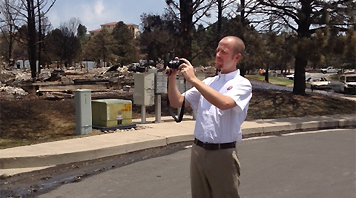|
RMIIA News Releases7951 E. Maplewood Avenue, Suite 110 Contact: Migration season has begun, more wildlife seen near roadsides: Data show wildlife-vehicle collisions trending downward since 2006 October 16, 2012 – Tis the season: Colorado's wildlife are on the move. They are migrating to wintering habitats, which is the reason this season—particularly October and November—tends to have the highest incidents of wildlife-vehicle collisions (WVCs). Wildlife-vehicle collisions happen year round, 24/7. However, there is always an increase during migration season, and particularly during the hours between dusk and dawn. These collisions are not only a matter of safety, but can be quite costly as well. According to Carole Walker, executive director of the Rocky Mountain Insurance Information Association, the insurance industry pays out nearly $1.1 billion a year in claims for all wildlife-vehicle collisions nationwide—and the cost to pay those claims is rising. The average property damage cost of collisions involving wildlife during the final half of 2010 and the first half of 2011 was $3,171, up 2.2 percent from the year before. WILDLIFE-VEHICLE COLLISION TREND "When we plan or implement any kind of wildlife mitigation for our roadways, we always look at data over a 5 to 10-year period," said CDOT Region 5 Traffic & Safety Engineer Mike McVaugh. "Several years of data help us to make the right decisions to help reduce the wildlife accident potential." Data for the period between 1999 and 2011 show various trends, most notable being that WVCs have been on a bit of a downward trend since 2006. "Even though the number of hits varies among counties and certainly among roadways, this overall trend is encouraging," McVaugh says. "It could be due to weather, changing migration routes, or the increased emphasis CDOT has made to warn and inform motorists. We hope that our wildlife mitigation efforts, as well as changes in driver behavior, have had a positive impact over the years." Click here to read the rest of this news release. ### Rocky Mountain Insurance Information Association is a non-profit consumer information organization. Affiliated with the Insurance Information Institute, RMIIA has been serving consumers and the media since 1952. |
|
303-790-0216 • 800-355-9524 • Contact Us • Legal Notice, Disclaimer & Terms of Use
Home • About RMIIA • News Room • P&C Insurance Industry • Auto • Homeowners • Business • Catastrophes • Agent Resources • Events & Education • Brochures

